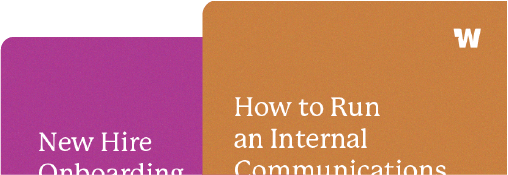Reaching and changing frontline employees: the 2024 edition

There’s an incredibly popular Harvard Business Review article from 1996 (!) that I see referenced constantly on LinkedIn, even to this day. The article, “Reaching and Changing Frontline Employees,” is a must-read for anyone leading a frontline team.
The story was updated again in 2001 and is now available for a one-time purchase of $8.95. But here we are in 2024, and we can all agree that a few things have changed in the last twenty years.
So, we’ve decided to take the research we’ve done thus far and put it together for the (free) 2024 edition of “Reaching and Changing Frontline Employees.”
We’ll break this down into three sections over a series of blog posts (we’ve added a bonus one):
- Reaching frontline employees
- Engaging frontline employees (bonus!)
- Changing frontline employees
You can download the full guide, “Reaching, Engaging, and Changing Frontline Employees”, here, or click through and follow along with the three-part blog series (links below!)
Once you’ve mastered these three things, you’ll unlock a truly powerful force for growth within your company’s culture and a rock-solid framework for staying connected with your teams.
Reaching frontline employees
Frontline employees make up approximately 70% of the world’s workforce. These individuals are tirelessly working on the actual front lines of their industry and often participating in manual, difficult, and/or customer-facing roles.
The fact that a frontline employee may feel disconnected or left out from company communications and decision-making can often be due to practical reasons: a frontline employee is, frankly, just harder to reach. Often, they don’t even have a company email or a way to reach them via instant messaging. They’re working on a set schedule, often in shifts, and they are incredibly busy; they aren’t sitting at their desk all day, because they don’t have one.
The best ways to reach a frontline employee during a big change is 1.) face-to-face, and 2.) through their supervisor. On this, we completely agree with the Harvard Business Review article…even 25 years later. But, as the article notes, these kinds of changes are only really happening every 5-10 years. So how do you reach frontline employees in the interim, and on a day-to-day basis?
For us, reaching employees really does come back to practicality (we’ll talk more about changing and engaging frontline employees later). You need to have real ways to reach your frontline staff, in the event of an emergency or just to educate and inform.
Relying on traditional means of communication isn’t very effective for deskless workers. A report by Atlanta-based communications agency, Tribe, indicated that 83% of “non-desk employees” don’t have a corporate email address and 45% don’t even have access to the company intranet when at work. So while email and intranet access definitely can have a high reach for an office-based workforce, relying on desk-based technology isn’t going to cut it for employees who are on their feet or on the road all day.
On top of that, organizations often rely heavily on verbal or paper-based communication channels like bulletin boards, posters, printouts, or newsletters. These are all really unreliable and ineffective ways to keep the frontline staff updated about company news. A physical reminder of a digital message is one thing, but purely hoping that employees will walk past that screen or pick up that piece of paper just won’t do it. (Plus, you as the communicator have absolutely no way of knowing if they saw it or not.)
The best solution to this problem would be to use a mode of communication that can be easily accessed by your frontline employees at all times.
Cell phones are far and away the most practical solution for this communication gap. Many companies implement a BYOD or Bring Your Own Device policy, in which employees are able to use their own personal cell phones for professional purposes. It’s a very effective strategy for reaching your teams wherever they may be; not only is it convenient for them to have all of their information all in one place, but it also increases the likelihood that they’ll check and engage with your communications, as well.
(We’ve created a BYOD Policy and Agreement template that you can download and customize.)
Another great way to reach your frontline employees: QR codes. We recommend that your announcements, updates, and messages are not only delivered via traditional emails, but also prominently displayed on digital signage, posters, or in common areas. With Workshop, you can generate a QR code for any email with a quick click, and use that QR code for tabletop signage, office displays, breakroom posters, you name it! Our QR code generation feature ensures that your frontline employees get the information they need right at a glance.







